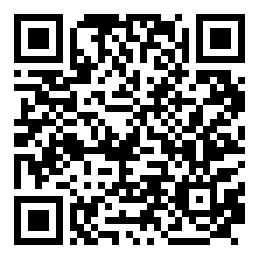Social Design: Definitions
Graphic design seeking for understanding between sender and receiver through communication.
- Comments:
- 0
- Votes:
- 2
- ES
In the article “What is social design?” I attempted to explore its application fields. I mentioned what I found on the Internet as it were, that from where I stand is not social design. However, much was left out to define. Here, I move on a bit further.
If Social Design is by excellence a mediation between human communication, how to achieve such mediation? How to bring closer the communicating parts without turning it into an one-way setpoint transmission? Some clarifications and examples will help to define what social design is, but above all, they'll help to the work of whoever wishes to exercise, precisely, social design.
It is widely known the fact that every individual perceives the world and its components in a sui generis manner. There are no two individuals with an identical perception. This postulate, taken from neurosciences and neuropsychology is the starting point of every design, and particularly, of social design. The idea here is to think of a design that puts sender and receiver closer. A design capable of promoting contact points to easen the understanding between the parts.
The need of proximity through communication is born from that particular, individual perception and of the nature of information. As Deleuze states: to inform is nothing but “to broadcast setpoints”. This is: “what we have to believe, what we are compelled to believe or what we are enabled to believe or (even) pretend to believe”1 (what is communicated). The rendezvous point for human proximity in this mutual setpoint broadcast can be established by social design, by proposing rendezvous points drawn out of the communicants' shared experience. In this case, the designer's task is to find those contact points, which implies knowing the experience of those under communication.
Therefore, the goal of social design is to find aesthetic solutions in its works, that propose contact points between sender and receiver, preventing an one-way flow from occurring as it typically happens in institutional and commercial design.
On the other hand, it is necessary to state that social design isn't a discipline detached from Graphic Design; instead, along with commercial and institutional design, they conform unity. Social design is the exercise of Graphic Design that brings together two joint entities in their practical aspect. While institutional and commercial design are substantially one-way, social design supposes two entities bound in a design. It is worth reminding that in institutional and commercial designs, the goal is to impact the receiver, and the attempt to bring together sender and receiver goes only in a sender-receiver way, not backwards. In these cases, communication can provide precise, biased or blurry answers.
A precise answer occurs when the receiver responds to the message directly, whether by adoption or by connection with familiar ideas or things. In institutional and commercial design, the sender never gets to the response directly, for sender and receiver move in different planes with different interesets. The sender only sells, proposes or spreads, while the receiver just buys or executes. There is nothing outside general context that brings together directly these events.
A receiver responds partially when the message awakens urges the sender cannot satisfy, provoking frustrations, depressive moods or deviated behaviors that motivates responses far from those the sender pretends. An example of it is the partial response given to stimulate provoked by designed pieces that show situations, people or objects unreachable for most of the population.
A blurry response occurs when the user adopts answers indirectly linked with the received designed message. For example, a graphic design attempting to position a brand of trousers, motivates the purchase of a shirt that goes with a trouser or, the message merely evokes vaguely related memories with the brand, without being able to position itself further.
In social design, both sender and receiver find points that draw them near in shared events. This is a huge difference from institutional and commercial designs, where a dreamy contact between sender and receiver is pretended - this is, an encounter that substantially occurs in the receiver's imagination, product of the neural (synaptic) interconnection induced by messages.
Institutional design yearns for setpoints in its messages to be attended. Commercial design yearns to impact the receiver to reinforce or position a brand, a product or a service. Meanwhile, social design pretends to contribute to the understanding between both parties, drawing approach possibilities between them, proposing images and texts located between two perceptions: just as institutional and commercial design, incites and proposes and additionally searches for the common point between sender and receiving, going back and forth through registered channels in the making of the communicant parties.
In social design, word recovers its primal function of aiding events, not as a mere portrayer of setpoints. Ideology is based on isms and becomes the watermark of who broadcasts and not in universal, absolute truths. Thus, zapatism, marxism or christianism are identifiers that help locate the sender and not a series of setpoints that the receiver would have to fulfill.
Social design is oriented to the understanding of the parties involved in the communicational act. Therefore, a christian and a marxist could understand each other through common facts, despite that from an ideological perspective these might be mutually exclusive and contradictory. In such case, the designer's proposals bring both sender and receiver together, looking for common contact points.
Finally, it would be necessary to consider that social design, as an organic part of a happening, can only be qualified as such by the design's users. Characterization of a social design is defined by the usefulness it brings to the communicating parties and not necessarily for a particular trait. The theory surrounding social design merely contributes to clarify that there is another possibility of design beyond commercial and institutional design.
- Deleuze, Gilles. Conferencia dictada en la Escuela Superior de Oficios de Imagen y Sonido, el 17 de marzo de 1987. Watch Youtube video (in spanish).
Topics covered in this article
What do you think?
Your perspective is valuable. Share your opinion with the community in the discussion.
Comment now!
This article does not express the opinion of the editors and managers of FOROALFA, who assume no responsibility for its authorship and nature. To republish, except as specifically indicated, please request permission to author. Given the gratuity of this site and the hyper textual condition of the Web, we will be grateful if you avoid reproducing this article on other websites.




